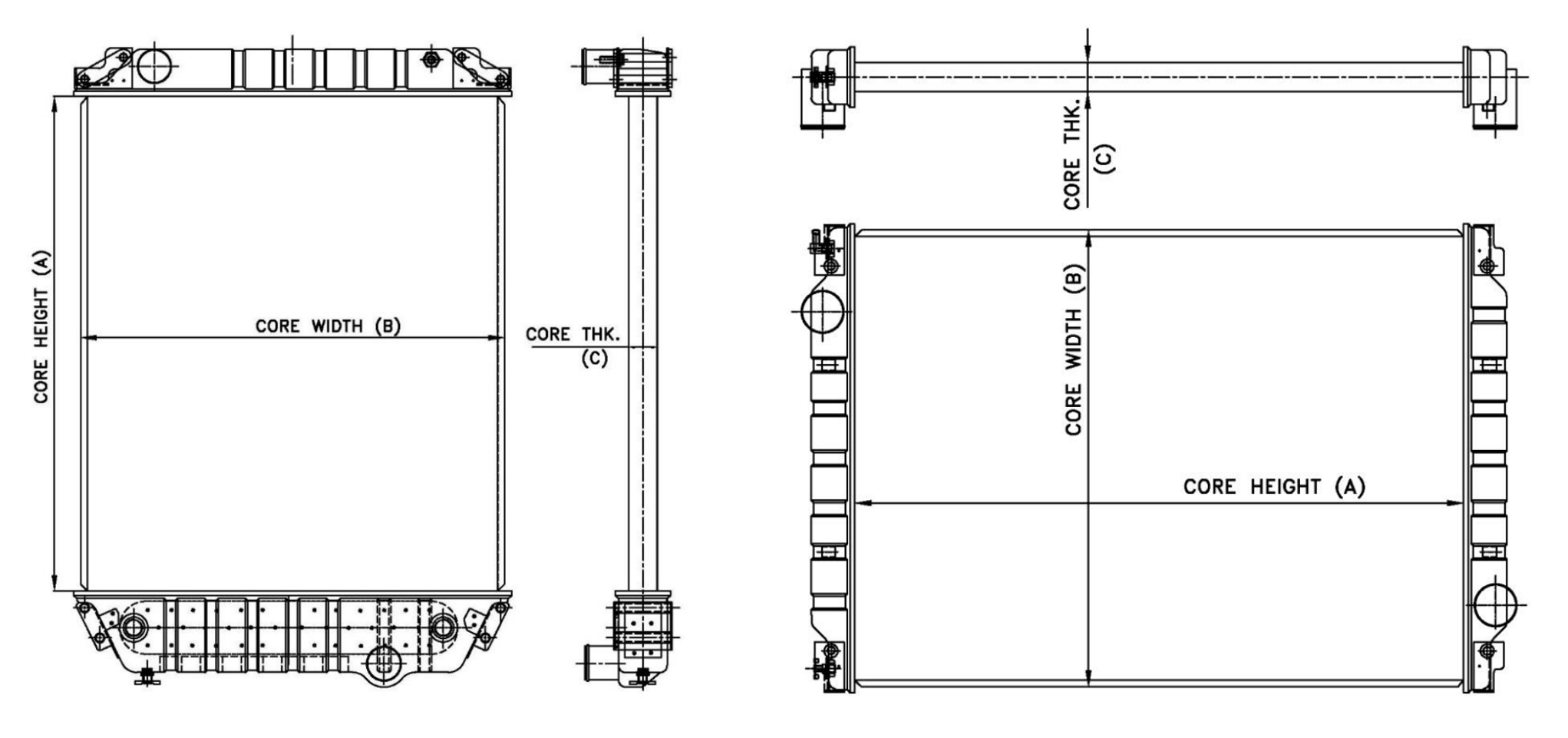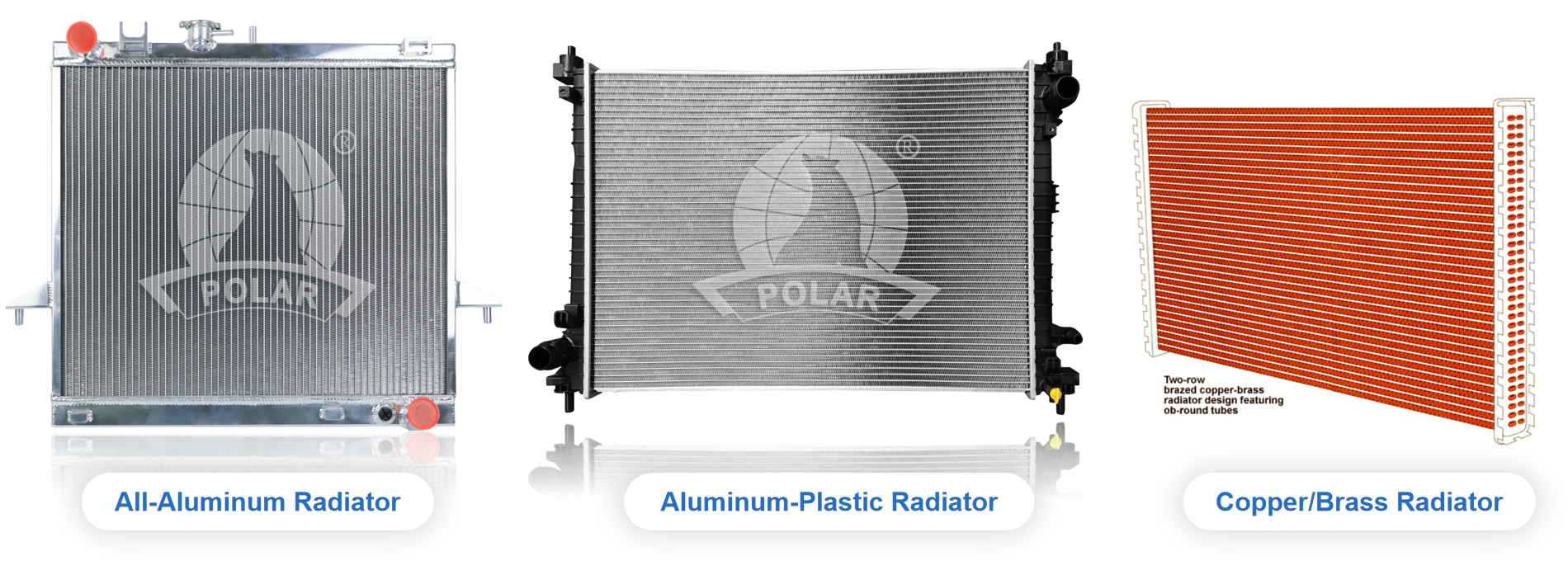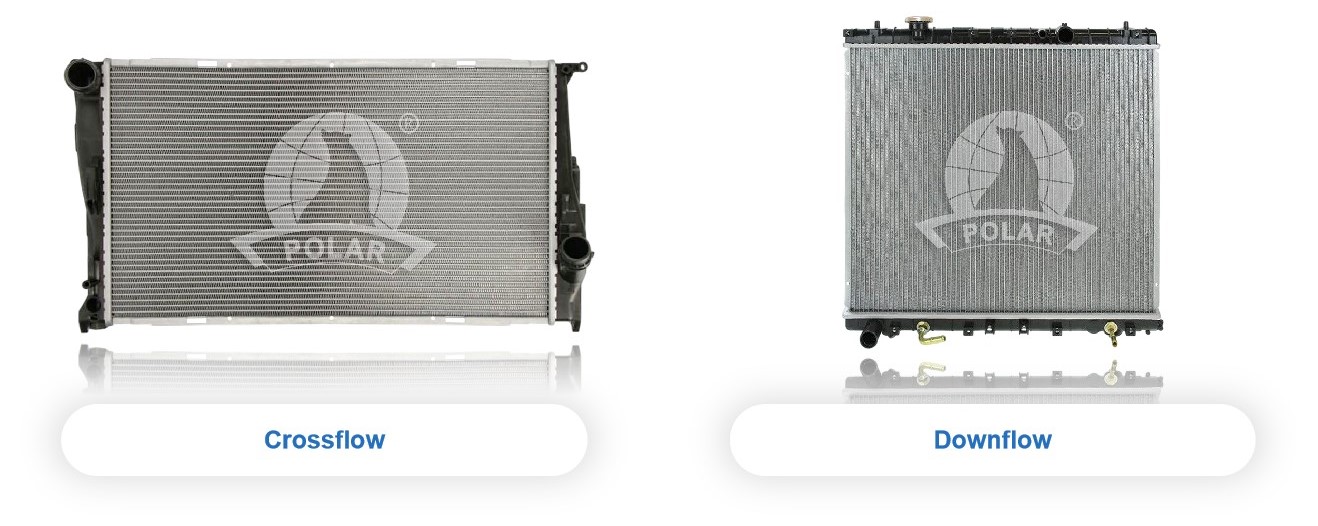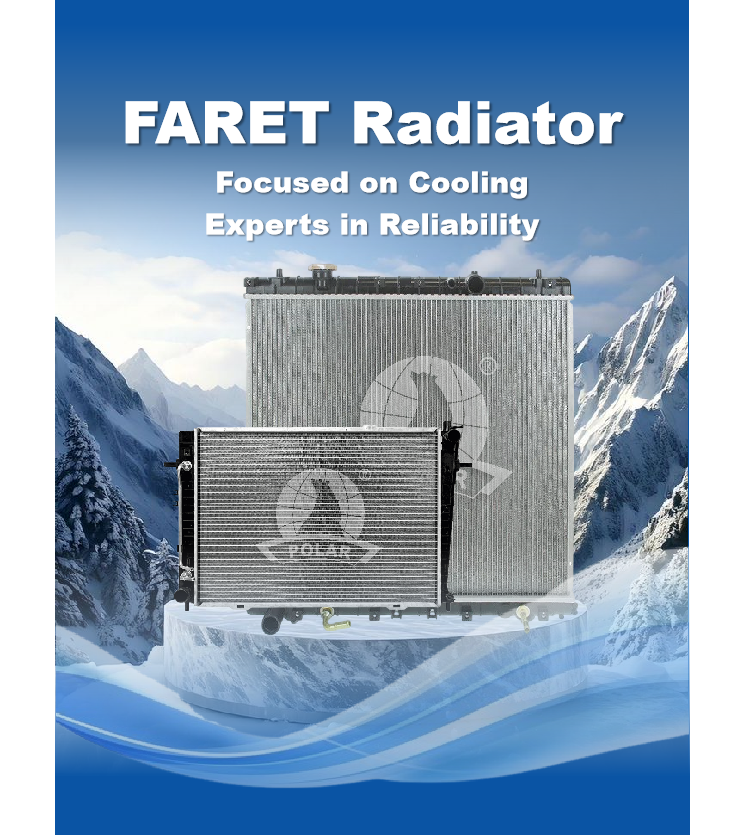How to choose a RIGHT Radiator?
Many car owners face difficulties when replacing their radiator: Is all-aluminum better or aluminum-plastic? What's the difference between crossflow and downflow? Can a different size even fit?
Don't worry! This guide will help you quickly grasp the core knowledge points for radiator selection, enabling you to choose wisely, install smoothly, and avoid pitfalls.
1. Before Purchasing: Prepare These 4 Points
(1) Identify Your Vehicle Model and Engine Parameters
The primary task is to confirm your vehicle's brand, specific model, and production year. Cooling system designs vary between different models, and the engine type determines the required radiator specifications.
(2) Measure the Installation Dimensions
Include the original radiator's length, width, thickness, inlet/outlet diameters and positions, and mounting hole spacing. Verifying these details in advance can effectively prevent installation failure due to size mismatches.

(3) Define Your Performance Needs
Is the car mainly for daily commuting, or do you frequently drive under high-load conditions like high temperatures, high speeds, or mountain climbing? The higher the usage intensity, the higher the demand for cooling efficiency.
(4) Assess Installation Space and Conditions
The radiator size must fit the engine bay. It needs sufficient space for heat dissipation while avoiding occupying too much space that could affect the installation and maintenance of other components.
2. Common Radiator Types & Purchasing Recommendations
(1) How to Choose Material?
All-Aluminum Radiator
Characteristics:Lightweight, excellent heat dissipation, corrosion-resistant, good value.
Suitable For:Users focused on performance & power upgrades.
Aluminum-Plastic Radiator
Characteristics:Low cost, lightweight, moderate durability.
Suitable For:Ideal for daily commuters.
Copper/Brass Radiator
Characteristics:Superior thermal conductivity, sturdy & durable, but heavier and higher cost.
Suitable For:Older vehicles or high-load usage scenarios.

(2) What's the Difference in Structure?
> Crossflow
Characteristics:Coolant flows horizontally, typically from one side to the other; larger frontal area improves front-end aerodynamics; higher heat dissipation efficiency.
Suitable Applications:Most modern cars, performance/modified cars, vehicles with ample lateral engine bay space.
Recommendation:Highly recommended, especially for high-performance applications or scenarios requiring stronger cooling.
> Downflow
Characteristics:Coolant flows vertically from top to bottom; offers good strength and reliable mounting.
Suitable Applications:Older vehicles, trucks, vehicles with ample vertical space.
Recommendation:If the vehicle came factory-equipped with downflow, do not arbitrarily change the structure, as it may affect circulation and installation fit.

(3) How to Choose Core Rows and Tube Size?
The number of coolant flow tubes within the radiator core (single-row, dual-row, triple-row) and the diameter of each tube directly impact overall cooling efficiency. Generally, more rows and well-designed tube diameters mean stronger cooling capacity, but this also increases cost, weight, and size.
Purchasing Recommendations:
> Daily Driving : Factory specifications (usually 1-2 rows) are sufficient. Good value, lightweight, easy installation.
> Occasional High-Speed or High-Temperature Driving : Dual-row is the safest choice, balancing cooling performance and installation ease.
> Performance Cars / High Load / Modifications : Triple-row offers ultimate cooling, but ensure sufficient space and airflow path.
Important Notes:
More rows ≠ Absolutely better. Increasing rows also means higher air resistance and installation difficulty. An excessively thick radiator can actually reduce airflow efficiency. Always confirm before installation if the fan airflow and engine bay space support a multi-row core.
(4) Other Purchasing Factors
> Cooling Efficiency : Check radiator surface area, fin density, cooling channel design, etc.
> Compatibility : Ensure smooth connection for fan mounting holes and sensor interfaces with the original vehicle.
> Brand & Warranty : Choose reputable brands with good after-sales service for peace of mind. Quality products usually offer a 1-2 year warranty.

> Perfect Fit, Saves Time & Effort : Precise fitment for hassle-free installation.
> Precision Engineering, Sturdy & Durable:Built tough for long-lasting performance.
> Optimized Structure, Efficient Cooling:Engineered design maximizes heat dissipation.
> High Value, Warranty Peace of Mind:Great price backed by a solid warranty.
Contact us NOW to get the latest quotations with discount.
You would also get more market new product informations, factoryvisit reservation, and more to discover!


















